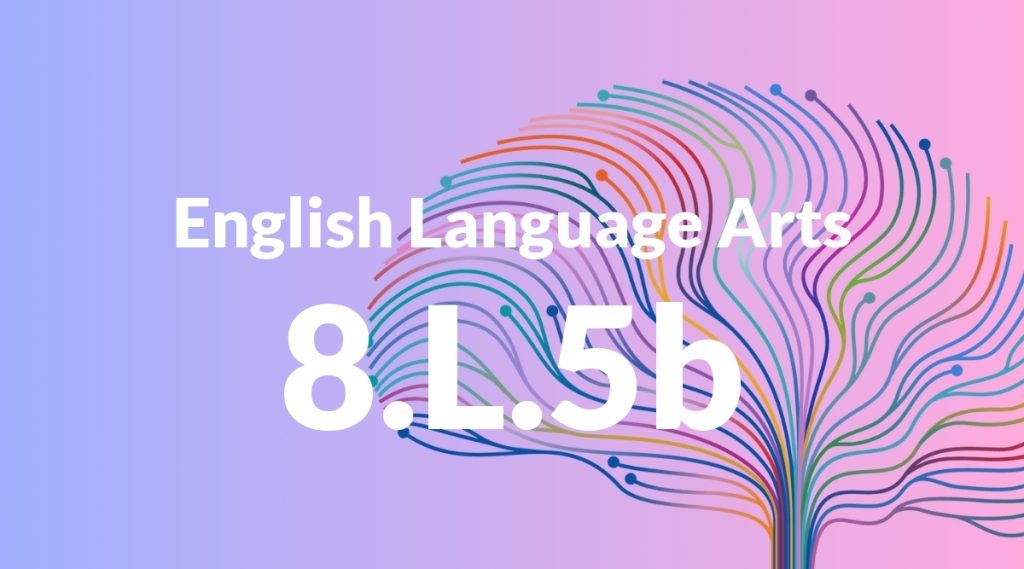Standard: 8.L.5b – Use the relationship between particular words to better understand each of the words.
Grade level: Grade 8
Subject: English Language Arts
Domain: Language
Teacher Overview
This standard emphasizes the importance of understanding the relationships between words to enhance vocabulary and comprehension. It is crucial for students to recognize how words relate to one another in order to improve their reading, writing, and communication skills. Mastering this standard will help students navigate complex texts and articulate their thoughts more precisely. Students should have foundational knowledge of basic vocabulary, including common prefixes, suffixes, and root words. They should understand the concepts of synonyms, antonyms, and context clues.
After mastering this standard, students will be able to analyze complex texts, enhance their writing with precise language, and improve their communication skills by effectively choosing words based on their relationships.
Common Misconception 1
A common misconception is that synonyms are always interchangeable. This is incorrect because words with similar meanings can have different connotations and are appropriate in different contexts.
Intervention 1
Use examples to show how synonyms can vary in connotation and context. Discuss why choosing the right word is important for clarity and precision in communication.
Common Misconception 2
Another misconception is that context clues are always obvious and easy to identify. In reality, context clues can be subtle and require careful analysis to understand the meaning of unfamiliar words.
Intervention 2
Teach students strategies for identifying different types of context clues and provide practice with texts that offer varied and challenging examples.
Prerequisite Knowledge
Students should have a basic understanding of vocabulary, including common prefixes, suffixes, and root words. They should also be familiar with the concepts of synonyms, antonyms, and context clues.
Subsequent Knowledge
After mastering this standard, students will be able to analyze more complex texts, enhance their writing with precise language, and improve their communication skills by choosing words effectively based on their relationships.
Instructional Activities
- Create a word map to explore relationships between synonyms, antonyms, and related words.
- Use context clues worksheets to practice identifying and using context clues in sentences.
- Engage in group discussions to analyze word choices in different contexts.
- Write short stories or essays focusing on precise word choice and varied vocabulary.
- Play word games that emphasize word relationships, such as analogies or synonym/antonym matching.
- Analyze excerpts from literature to identify and discuss word relationships and their impact on meaning.




